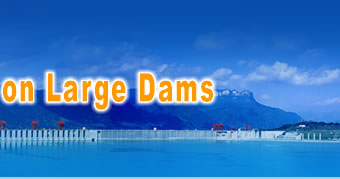The era of the World Commission on Dams is definitely belonging to the past
6th World Water Forum in Marseille: the World Bank has confirmed that it has now turned the page of the WCD era. During an intervention at a high level panel on water infrastructure for Development in Large countries, Rachel Kyte, Vice President for sustainable development gave a very strongly worded position in favor of large water infrastructures and hydropower.
|
|
 |
Rachel Kyte during the Forum in Marseille
(Photo ICOLD) |
For her, “the criteria for evaluating large scale water projects that are applied by the World Bank, the regional development banks or the private banking sector, are now converging. And that is a good thing.” She referred to the era of the World Commission on Dams, a joint operation of the World Bank and the International Union for the Conservation of Nature, created in 1998. Its final report, issued in November 2000, met a lukewarm welcome.
While there was general agreement on the five core values and the seven strategic priorities expressed by the WCD, ICOLD and other groups expressed strong reservations regarding the Commission's policy principles and guidelines. They singled out the principle according to which“ Decisions affecting indigenous peoples should be taken with their free, prior and informed consent.” According to them, that principle would mean that basically no dam could be built. On the contrary, all the anti-dam organizations considered the WCD report as an unsurpassable bible, since it gave them the mean to block all dam projects.
At that time, the World Bank financed very few project in the world and it shared the WCD conclusions that while “dams have made an important and significant contribution to human development,” in “too many cases an unacceptable and often unnecessary price has been paid to secure those benefits, especially in social and environmental terms, by people displaced, by communities downstream, by taxpayers and by the natural environment.”
12 years later, the situation has changed radically. The Vice-President for Sustainable Development stated that “Large scale water infrastructure have an essential role to play, especially in light of the climate change mitigation”. After explaining the multi-purpose nature of a dam, which brings benefits for power, agriculture, flood protection, water supply, navigation and tourism, she concluded: “Large hydropower facilities have become a key milestone for green growth”.
In a later interview with this author, she was more cautious, stating that “A lot of the ideas included in the WCD report have gone through. For example, the Free Prior Informed Consent of the indigenous communities, which was wrongly understood as a Veto Right from their part, is now seen as a process of developing dialog on the project. Another example is that the project developers have now recognized that there is a financial cost in neglecting that kind of social dialog in the conception phase of the project. This is a direct result of WCD work !”
During the same panel, organized on March 14th by the US Army Corps of Engineers (Mr. Steven Stockton, director for Civil Works and Mr. Jerome Delli Priscoli, head of the Institute for Water Resources), many other leaders of large countries expressed the same idea that dams were an absolute necessity.
The Chinese minister of Water resources, Mr Chen Lei reminded the gigantic efforts of his country to achieve water conservancy: 87,000 reservoirs, 300,000 km of river dikes, 230 GW of installed hydropower capacity among many other impressive figures. Thanks to these efforts, “China has been able to feed 21% of the world population with 6% of the world’s freshwater resources and 9% of the world’s arable land”. He also stressed that “infrastructures that we are building are crucial for adapting to climate change consequences and fighting against floods.”
Steven Stockton US ACE Director for civil works reminded the crucial role played by the engineers in the building of the USA nation, taking the famous example of the Tennessee Valley Authority. He stressed that “the efficiency of a large water project to generate growth depends highly on its multipurpose nature.” The more you have this multipurpose aspect, with the food-energy-water nexus, the more you tend to trigger an economic development that profits all the layers of society.
Jerson Kelman, former President of the Brazilian National Water Agency, now President of the Light Group, the Rio de Janeiro Power Company, recognized that “dam builders made many errors in the past” by not taking sufficiently into account the environment. He concluded that “not all the technically feasible projects should be built”. But he stressed that there is no such thing as a “without dams alternative”. He advocated that a few large dams were much better than many small dams, for the environment and for the economy giving the example of water evaporation, much larger in small projects than in large ones. The question that is often forgotten and that should be asked is: “what happens if this project is not built ?”
Rachel Kyte basically answered that question: no green growth.
Emmanuel Grenier
Source: ICOLD website







